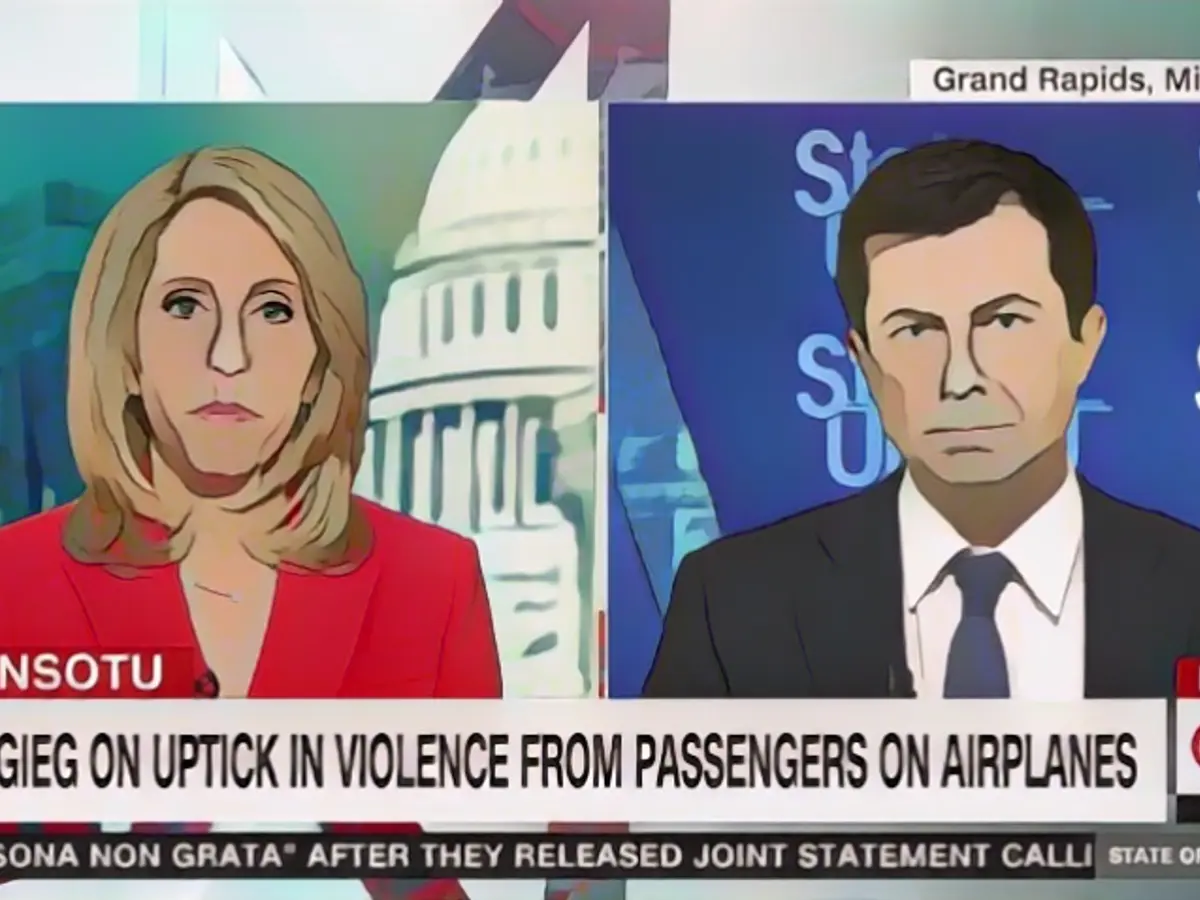Troublemakers in the Skies: The Debate Over a No-Fly List for Disruptive Passengers
If you've embarked on a flight in recent times, you might find yourself recalling 2021 - a year marked by an extraordinary surge in disrespectful passengers. According to the Federal Aviation Administration (FAA), this affliction made 2021 the "Year of the Misfit" in terms of unsettling conduct. Believe it or not, almost 72% of these fracas were sparked by mask mandates!
As a result, the concept of a "no-fly list" for these rogue passengers has garnered serious attention. Aviation and air travel security are crucial, after all; several passengers continue to defy the rules and create conflict, potentially posing a threat to both flight crews and other passengers' peace of mind.
The Case for No-Fly Lists
Supporters of such a system argue that it could effectively serve as a deterrent, encouraging passengers to think twice before committing any infractions. The specter of transient or even permanent restriction from flying might nudge passengers to adhere to expectations.
What's more, even a levied no-fly list could offer some relief to flight personnel and other passengers who confront disturbing individuals on a daily basis.
However, this is not an inherently simple issue, as a multitude of concerns and criticisms loom over the creation of a no-fly list for disruptive passengers.
Potential Hurdles and Concerns
Creating a no-fly list requires deliberate consideration, as the following set of challenges and concerns need to be ironed out:
- Defining Eligibility Criteria: An unambiguous set of eligibility guidelines is necessary, ensuring only individuals who pose a genuine threat to safety and order find themselves on the list.
- Establishing a Fair Appeals Process: A fair, transparent, and easily accessible appeals mechanism is essential for those who believe they have been unfairly burdened with such a designation.
- Ensuring Consistent Enforcement: Uniform enforcement across airlines and reporting requirements is crucial, preventing easy workarounds and maintaining the integrity of the list.
- Promoting Public Awareness: Making the public aware of the consequences of being added to the list can act as a deterrent for wannabe miscreants.
- Regular Updating and Monitoring: Regular assessments and updates are crucial to keeping the list relevant and current.
- Collaborating with Law Enforcement: Cooperation with relevant law enforcement agencies can help in identifying, tracking, and prosecuting habitual wrongdoers.
These obstacles, while potentially beneficial and detrimental, represent only one piece of the puzzle in creating a more peaceful and secure journey for everyone.
Reflections and Closing Thoughts
The discussion surrounding a no-fly list for misbehaving passengers remains a lively topic, with advocates and critics making convincing points on either side. Ultimately, the objective will be to develop a balanced approach, ensuring passenger rights while simultaneously improving safety.
One thing is indisputable: the skies should remain a tranquil and respectful environment for passengers embarking on flights.
Supplementary Insights
Arguments in Favor of Implementing a No-Fly List for Disruptive Passengers
- Strengthened Security and Protection: A no-fly list can bolster security by preventing disruptive or violent passengers from boarding flights. This is particularly crucial when addressing behaviors such as physical attacks, verbal harassment, or attempts to thwart flight crew members[1][2].
- Preventive Measures: By identifying and banning such passengers, airlines can significantly reduce the likelihood of in-flight incidents. These incidents might pose a threat to everyone aboard.
- Protecting Other Travelers: Disruptive passengers can make flying an unpleasant experience for other passengers. A no-fly list can aid in maintaining a quiet and secure journey for all passengers[1][2].
- Compliance with Global Standards: Some countries, like India, have already enacted no-fly lists. Adhering to such policies can help align U.S. regulations with international standards and practices.
Arguments Against Implementing a No-Fly List for Disruptive Passengers
- Due Process Concerns: The process for adding individuals to a no-fly list must prioritize due process. This includes establishing clear procedures for reporting incidents, creating review committees, and granting appeals processes, ensuring equity and fairness[1][2].
- Potential for Misuse: There is a risk that the list may be misused, with airlines or authorities exploiting it to target specific individuals or groups unfairly. Preventing such misuse requires stringent guidelines and oversight mechanisms.
- Impact on Civil Liberties: Developing a no-fly list raises concern over civil liberties and potential overreach by authorities. It is essential to find a balance between security needs and individual rights and freedoms[1][2].
- Administrative Overburden and Complexity: Setting up and maintaining a no-fly list necessitates significant resources and infrastructure. This includes regular updates, tracking, and reviews to ensure the list remains effective in preventing disruptive behavior.
Implementation Considerations
- Clear Criteria and Guidelines: Establishing clear guidelines for what constitutes disruptive behavior and applying them consistently is vital. This includes creating different categories (e.g., verbal harassment, physical altercations) along with respective consequences.
- Transparency and Public Access: The list should be transparent, with clear information available on how passengers can be added or removed. Providing public access can help maintain accountability and trust.
- Robust Appeals Process: A robust appeals process is essential to ensure fairness and transparency for individuals placed on the list. This may involve independent review panels and higher court redress provisions.
- Adequate Training for Crew and Staff: Guaranteeing that flight staff and airline personnel get appropriate training essential to managing disruptive situations effectively, including incident reporting protocols and passenger handling methods[1][2].
- International Coordination: If a no-fly list is created, aligning it with international authorities to ensure recognition and respect across borders is crucial. This can prevent passengers from circumventing bans by switching airlines.
- Regular Review and Update: Regularly assessing and revising the no-fly list is essential to maintain its effectiveness in preventing disruptive behavior, with periodic audits and assessments of impact.
By prudently considering these points, airlines and regulatory bodies can balance safety requirements with individual rights and freedoms, effectively safeguarding the skies.







